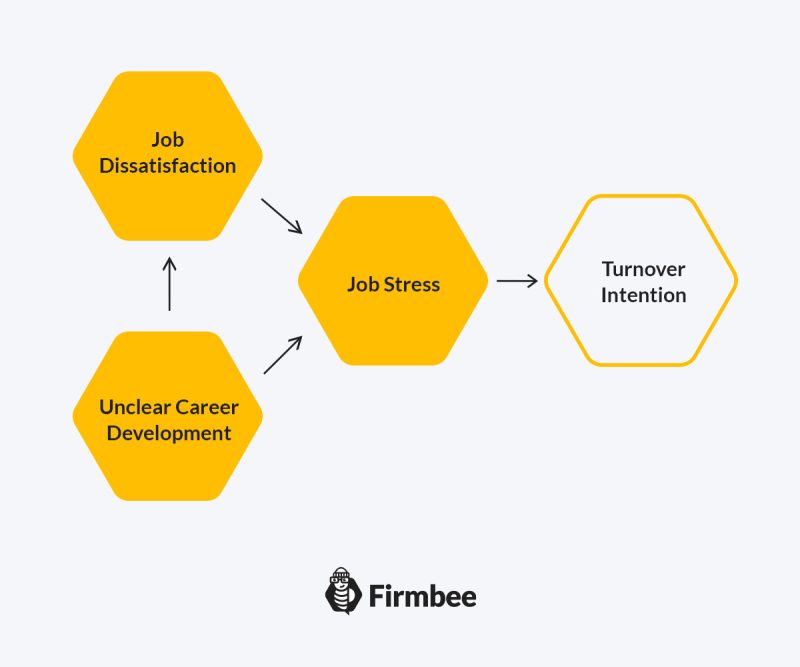The rapid pace of change in today’s economic markets determines a change in the organization’s approach to employees. Treating human resources as a valuable component of intangible resources is a key asset for the company to keep a competitive advantage. This, in turn, directly implies the reasoning behind investing in employee development and treating employees as a vital part of the organization. The path of professional development from the perspective of the employer is not always the same as the expectations of employees. It relates to many aspects, depending on the way we define professional development individual predispositions or training offerings.
Professional development and occupational stress – table of contents:
Professional development as a long-term investment
Professional development consists of a deliberate configuration of undertakings and activities of an organization to enrich knowledge, develop abilities and skills, as well as shape the right attitudes of personnel. For employees, it is an opportunity to improve their professional skills, while the company gains competitiveness and labor efficiency.
Professional development or, in other words, career development exists at various levels: the entire organization, employee teams, or individual employees. Recognizing human capital as a strategic factor in the development of an organization, we can define three main groups of career-shaping instruments, i.e. training, employee relocation, and job structuring.
Training is the most common instrument of an organization to improve the skills of its employees. They consist of deepening and expanding existing knowledge and skills to carry out new tasks, increase responsibilities or take up a new job position (promotion). In the context of this article, the primary purpose of training is to help employees develop within the company to meet current and future personnel needs.
Adequate and, “tailor-made” professional development of an employee is only possible if a coherent strategy is developed concerning the following management processes:
- Professional development program and career path,
- Training, coaching or mentoring system,
- Talent management,
- Internal recruitment,
- Remuneration system,
- Job description and positioning in the organizational structure,
- Periodic evaluation system.
Stress-related to career development
Stress is a syndrome of the modern world. People, in the pursuit of money, often forget that “life at high speed” will more or less take a toll on their mental health. Over the past few years, with the economic crisis, the Covid-19 epidemic, together with Russia’s war in Ukraine, stress has become an indispensable part of everyone’s life. Growing social unrest is not without its impact on the labor market situation, further aggravating occupational stress.
Stress is an individual and unquantifiable property of a negative or positive nature. Whether stress has a constructive or pejorative effect on employees depends on the demands placed on them, their physical, intellectual and emotional capabilities as well as the support provided. Positive stress has a motivating effect on the work performed and the results achieved. Employees gain new experiences, knowledge and skills, and the ability to cope with stress in the future. Positively motivated, under the influence of mild stress (adrenaline), they may achieve better results in acquiring knowledge and will beat the competition on the way to promotion.
The negative effects of stress, on the other hand, demotivate better work, reduce productivity and efficiency of activities, and significantly affect the mental and physical health of employees (depression, anxiety).
The main cause of stress in the work environment is poor management and in the case of reference to professional development: setting too high requirements, unequal treatment, lack of a transparent career path as well as time pressure. In a clash with individual predispositions, either the employee will defend himself and achieve success or he will not mentally cope with the problem. A negative manifestation of stress is also professional burnout, i.e. dissatisfaction with work, a sense of lack of meaning in the tasks performed together with professional failure. In such a case, career development is stunted, and getting back, “on track” is possible only with the implementation of an appropriate recovery program and the help of a psychologist.

Summary
Stress is an integral part of work and professional development. Most often we talk about its negative effects. However, it is important to remember that a certain level of stress is indispensable to increase the level of work efficiency and achieve high results. It stimulates and keeps you ready for action, thus determining an increase in the potential for professional development and success. To maintain an appropriate balance of stress factors, so that they affect only constructively the work carried out, special emphasis should be placed on the implementation of an appropriate management strategy, adequate to the expectations and capabilities of the personnel employed.
If you like our content, join our busy bees community on Facebook, Twitter, LinkedIn, Instagram, YouTube, Pinterest.
Author: Nicole Mankin
HR manager with an excellent ability to build a positive atmosphere and create a valuable environment for employees. She loves to see the potential of talented people and mobilize them to develop.


















